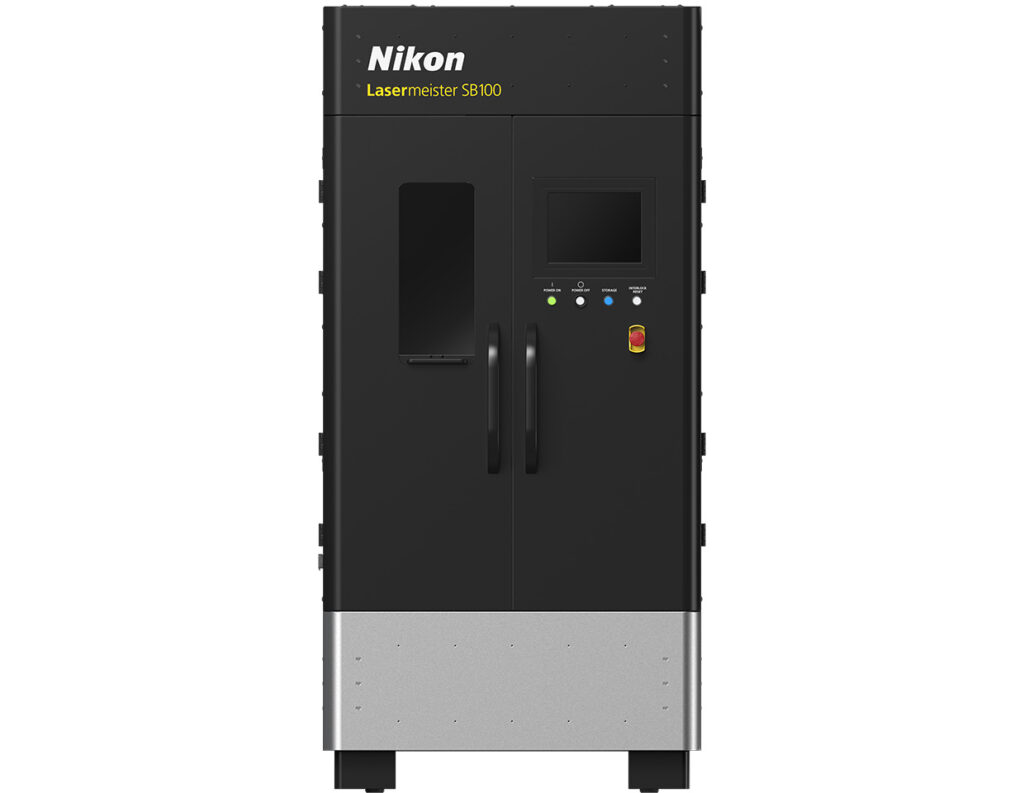Nikon has released the Lasermeister LM300A, a directed energy deposition (DED) system, along with the Lasermeister SB100 3D scanner. These two are designed to be used together. You can place a component into the scanner, which then scans it and automatically creates a tool path for the DED unit. For years, turbine blades, molds, oil and gas equipment, defense equipment, mining equipment, trains, and more have been repaired using DED. Often, machines working together in a cell in a highly automated fashion add material to achieve a near-net shape part, which is then machined down to the precise size needed to rejuvenate the object.
This segment of our industry, focusing on the repair and maintenance of components using DED, has been mature and ongoing for a long time, typically involving equipment from companies like Sciaky or Optomec. It is particularly prevalent in the repair of turbine blades, as gas turbines and turbo machinery are both very expensive and available at scale. Additionally, in sectors such as oil and gas, defense, and mining, the application of DED technology is rapidly expanding for wear surface applications and beyond. Nikon claims that its approach can result in lead time reductions of up to 65%.
The SB100 scanner not only scans and creates the tool path but also compares it with the original CAD model. You can then reinsert the component into the scanner for inspection after the process. Nikon claims an accuracy of “0 mm to a maximum of +0.5 mm difference for the XY-axis direction and +0.5 mm to a maximum of +1.5 mm difference for the Z-axis direction,” and states that this accuracy, along with a melt pool monitoring and feedback system that controls the laser, results in better surface quality. The system has been qualified for use with Ni625, Ni718, 316L, Ti64, and Ti-6Al-4V materials. The system is open, allowing for the addition of your own materials. The build volume is 297 x 210 x 400 mm.
Many DED systems are either crude or operate in an open environment. An enclosed system, like this one, should offer advantages over open alternatives. The concept of a combined scanner and printer within one workflow is appealing. Having both systems work in conjunction provides a streamlined process, potentially making operations more convenient for customers. Moreover, this combination should be capable of exporting and managing data more efficiently than print-only systems, which could lead to improved practices, better data handling, and more accurate tool pathing over time.
DED has traditionally been a bit of a rough affair that I refer to as metal Easy Cheese. However, the company claims surface roughness (Ra) values of less than 20 microns, which is indeed impressive. This level of surface finish would result in less need for grinding or milling, reducing overall machining time, material usage, and significant time savings. If Nikon can deliver on promises of increased performance and reduced post-processing time, the company could indeed have a real winner on their hands.
Indeed, while Nikon’s offering is promising, the build volume limitations mean that many turbine and other large components will not fit, leaving segments of the market open for competitors, even if Nikon outperforms in other areas. The suggestion to pair the system with a grinding or milling system is intriguing. Given that some Japanese companies excel in milling and grinding, offering a complete solution that includes these capabilities could enhance the attractiveness of Nikon’s system. This would allow for seamless export and analysis of machining data, providing a more integrated solution. However, Nikon may choose not to pursue this path to maintain a broad compatibility and integration with various systems, possibly to avoid alienating potential partners.
The software component of such a system would indeed be crucial. Nikon’s expertise in metrology could potentially allow them to create a comprehensive solution that far surpasses what other DED companies can offer. The key to growth in DED for Nikon could lie in leveraging their capabilities to analyze, certify, and optimize more effectively than others. By integrating data, metrology, and machining, Nikon could develop a solution that is not only easier to implement but also significantly more advanced than existing options.
Subscribe to Our Email Newsletter
Stay up-to-date on all the latest news from the 3D printing industry and receive information and offers from third party vendors.
Print Services
Upload your 3D Models and get them printed quickly and efficiently.
You May Also Like
Making 3D Printing Personal: How Faraz Faruqi Is Rethinking Digital Design at MIT CSAIL
What if your 3D printer could think more like an intelligent assistant, able to reason through a design idea, ask questions, and deliver something that works exactly the way the...
Reinventing Reindustrialization: Why NAVWAR Project Manager Spencer Koroly Invented a Made-in-America 3D Printer
It has become virtually impossible to regularly follow additive manufacturing (AM) industry news and not stumble across the term “defense industrial base” (DIB), a concept encompassing all the many diverse...
Heating Up: 3D Systems’ Scott Green Discusses 3D Printing’s Potential in the Data Center Industry
The relentless rise of NVIDIA, the steadily increasing pledges of major private and public investments in national infrastructure projects around the world, and the general cultural obsession with AI have...
Formlabs Teams Up with DMG MORI in Japan
In late June, Nick Graham, Chief Revenue Officer at Formlabs, announced on LinkedIn that the company had partnered with DMG MORI, one of the world’s leading machine tool companies, to...





































